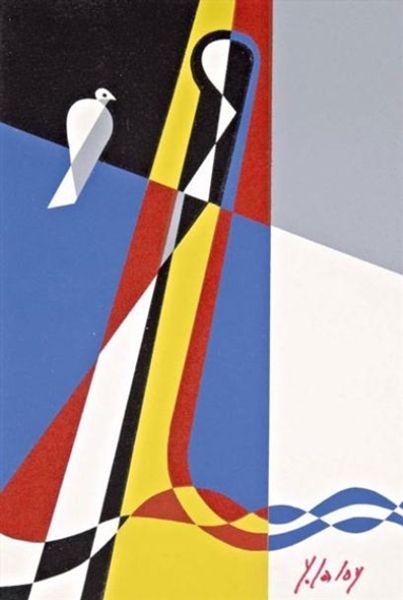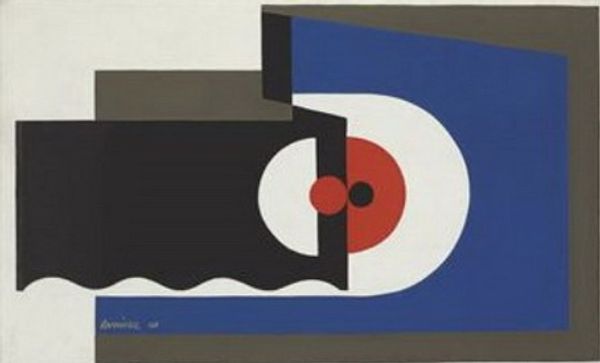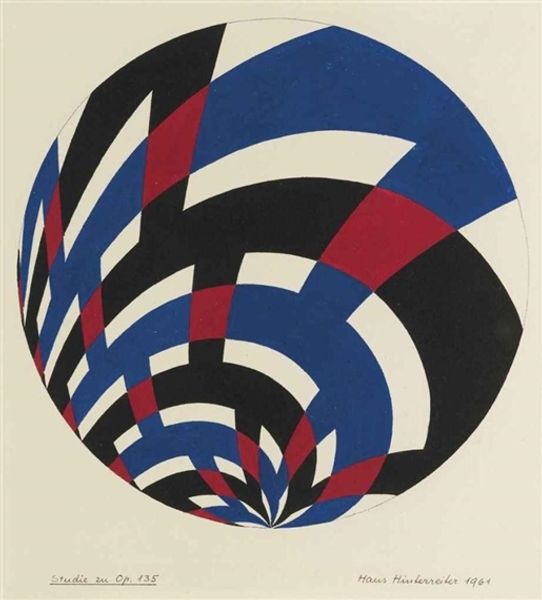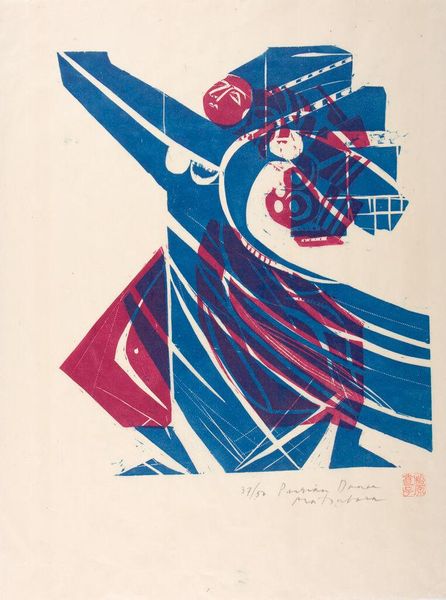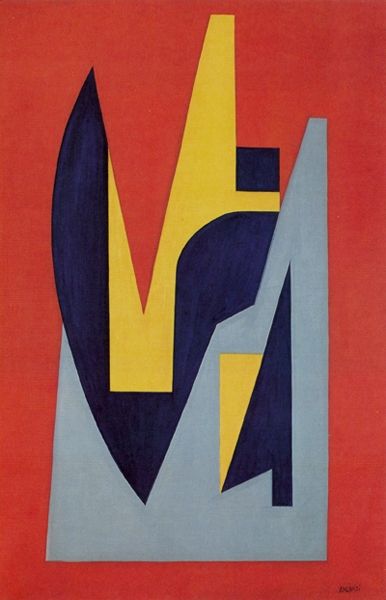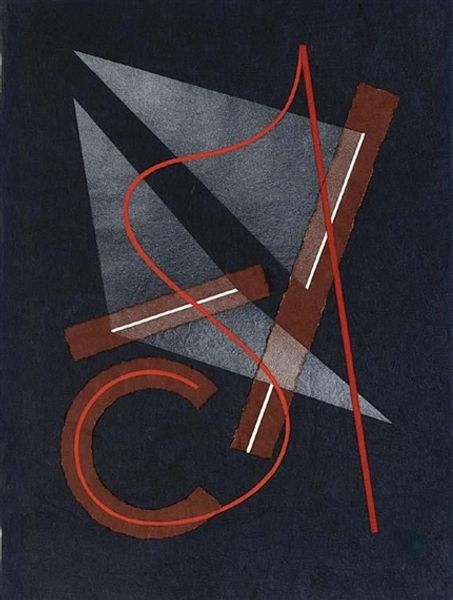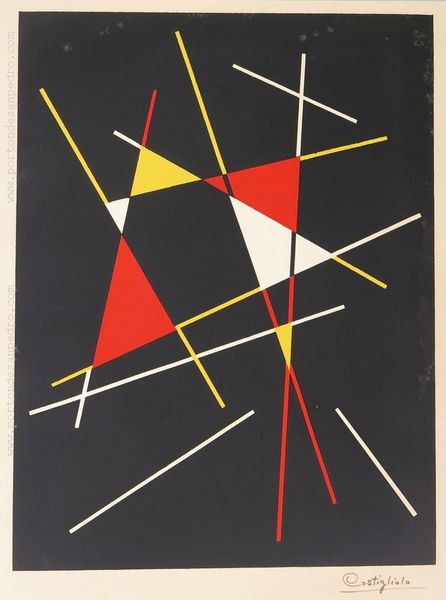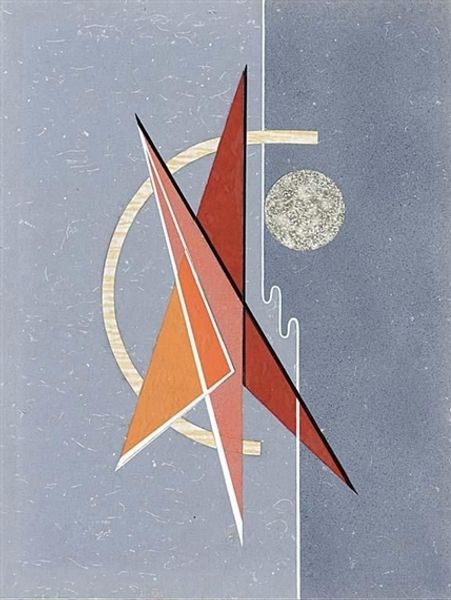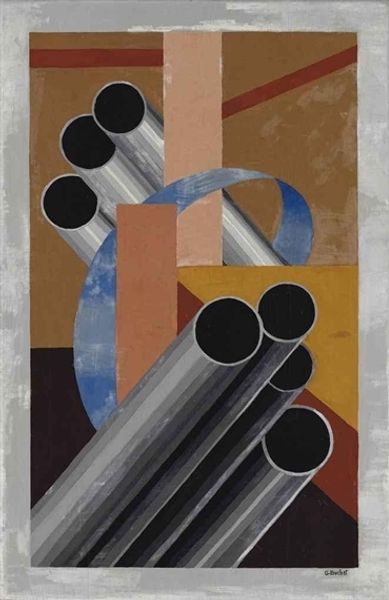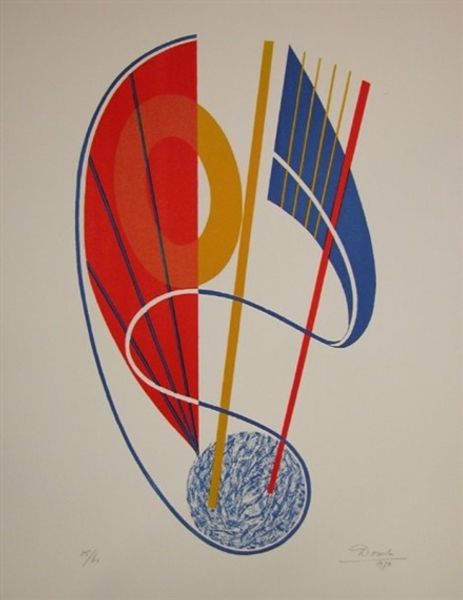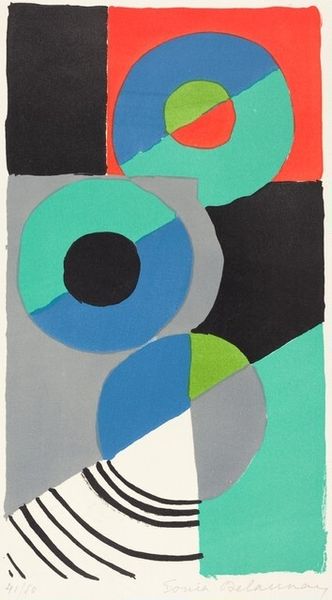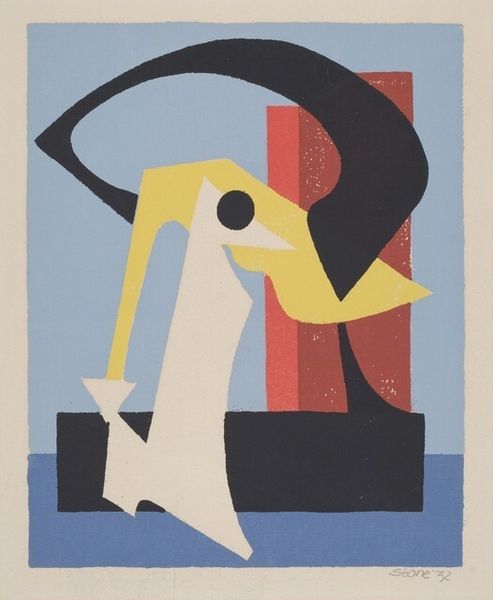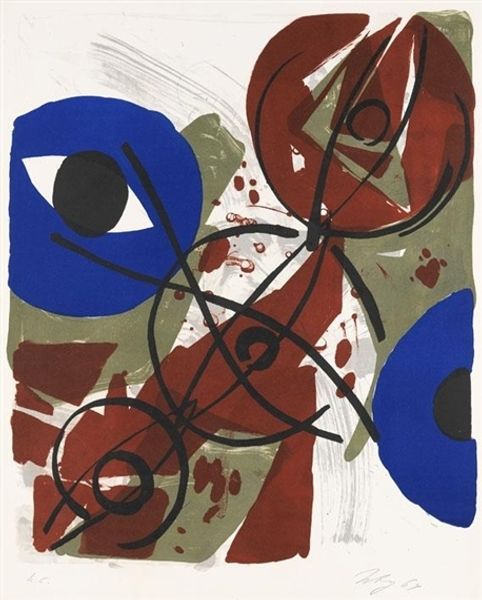
mixed-media
#
neo-plasticism
#
mixed-media
#
pop art
#
form
#
geometric
#
abstraction
#
line
#
modernism
Copyright: Cesar Domela,Fair Use
Curator: So, here we have Cesar Domela's "Composition," a mixed-media piece very much rooted in the neo-plasticist tradition. What strikes you first about this work? Editor: Immediately, I see the clean lines and geometric forms; there's a coolness to it, a sense of industrial precision. I am intrigued by his construction choices in working with the shapes. Curator: Absolutely, that precision is key. Neo-plasticism, with its focus on pure abstraction, was in many ways a reaction to the chaos and upheaval of the early 20th century. There's a utopian impulse here, a belief in the power of rational design to create a more harmonious world, for the masses. Editor: It makes me think of material efficiency and function. Each element feels carefully chosen and positioned for a specific purpose, but that purpose remains elusive. It looks like it could be machine-made. It calls into question notions of craftsmanship as strictly hand-made. Curator: The intersectionality within this piece exists as a deconstruction of form as language, even an aesthetic weapon against bourgeoisie sensibility. By reducing his palette to primary colors, using strong vertical and horizontal lines, and exploring shape relationships, the viewer sees their own meaning instead. Domela also uses asymmetry to achieve a kind of perfect tension. Editor: Thinking about labor, the mixed-media aspect suggests a breakdown of hierarchies, right? Traditional painting is aligned with this unique collage which democratizes the creative possibilities. What are the implications of making it available and reproducible? Curator: Certainly, one argument of that era was how artistic design and application could serve an ideal by using industry tools instead of rejecting them. It speaks to accessibility in opposition to art existing in only exclusive circles. But beyond utopian aesthetics, perhaps the work speaks of our very human attempts to order the universe, while never quite succeeding. Editor: That makes perfect sense. This work encourages an interaction with artistic tradition and manufacturing process. Now I see these simplified forms as a potential visual language and building block of industry, or maybe, on the other hand, deconstructing industrial elements and redefining new life and possibilities within art, at a smaller scale, and using repurposed and different media. Curator: Yes! Domela's contribution invites new considerations about how the artist and the industry speak to one another to this day. Editor: Absolutely. Thanks to his piece, I’m interested in pursuing abstraction’s ties to material engagement today.
Comments
No comments
Be the first to comment and join the conversation on the ultimate creative platform.
